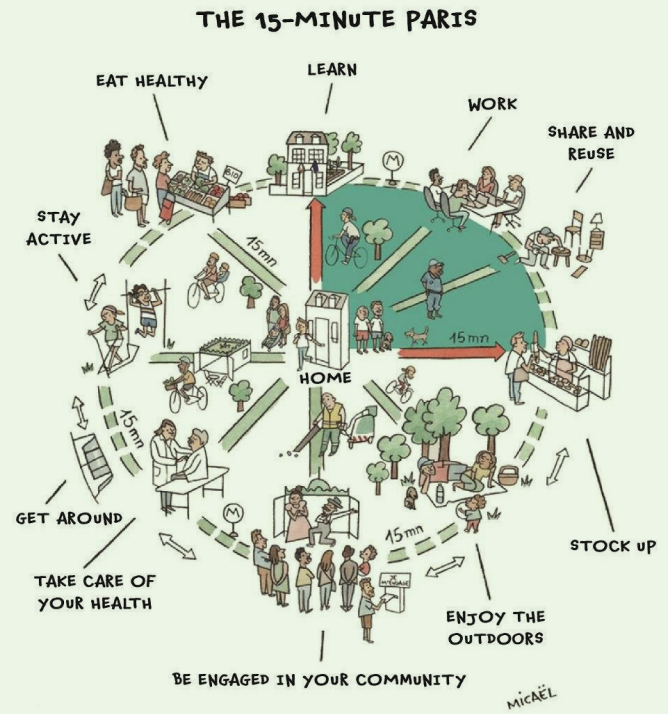The concept of the 15-minute city is one of the most prominent attempts to avoid or shorten trips in people's everyday lives. This can be achieved if essential services (e.g. shops, pharmacies, schools, work places, hospitals, leisure destinations etc.) are physically close to people's residential bases. The 15-minute city concept is thus tightly linked to spatial planning strategies and places strong emphasis on neighbourhood-based planning.

The 15-minute city can be a major contribution to carbon reduction strategies because fewer and/or shorter trips obviously mean fewer emissions but also because shorter trips are easier to cover on bike or by foot. A 15-minute city is also beneficial in terms of convenience, accessibility, safety and public health. Shorter trips also improve social equity because people who do not want to or are not able to own and/or drive a car can still reach their destinations.
Although related spatial planning ideas have been around for centuries, the "15-minute city" idea as a slogan has gained enormous prominence within the last few years. This is due to a large extent to the official endorsement and practical pursuit of the 15-minute city concept in Paris. It also resonates with the growing awareness that technical fixes alone (e.g. electromobility) will not be enough to achieve climate neutrality.
Within the widely established A-S-I pyramid, the 15-minute city concept falls firmly within the first, most effective and most important category to "A"void unnecessary trips; but it also contributes to a "S"hift from private motorized vehicles to more sustainable modes of transport (public transport, cycling and walking). It does not - and deliberately so - contribute to the attempt to "I"mprove mobility through technical fixes (e.g. alternative propulsion, smart traffic management etc.) and thus to "Improvements" to reduce the harmful effects of private motorized mobility.
EIT Urban Mobility (2022) mentions the following eight planning principles for a 15-minute city: Proximity to essential services | Proximity to public transport | Density | Mixed land use | Walkable and cyclable streets | Liveable public spaces and placemaking | Inclusiveness | Ubiquity.
Comments ()